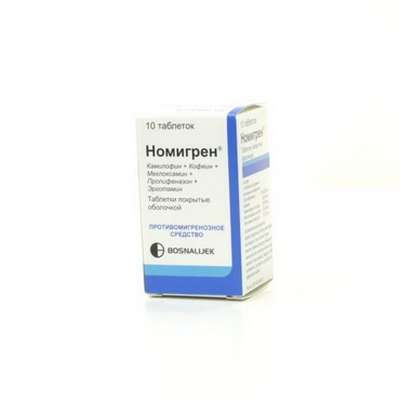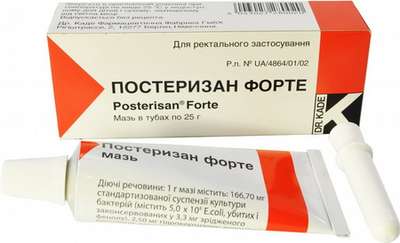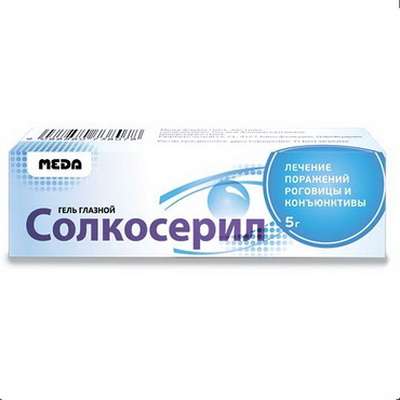Cavinton (Vinpocetine) tablets - Instructions for Use, Dosage, Side Effects, Reviews
03 May 2017
Synonyms: Intelectol
Active substance: Vinpocetine.
Vinpocetine (brand names: Cavinton, Intelectol; chemical name: ethyl apovincaminate) is a synthetic derivative of the vinca alkaloid vincamine (sometimes described as "a synthetic ethyl ester of apovincamine"), an extract from the lesser periwinkle plant.
Vinpocetine is not FDA approved in the United States for therapeutic use.
Vinpocetine has been reported to have cerebral blood-flow enhancing and neuroprotective effects, and has been used as a drug in Eastern Europe for the treatment of cerebrovascular disorders and age-related memory impairment.
ATC - N06BX18 Vinpocetine.
Pharmacological group - Cerebrovascular correctors; Nootropics.
Nosological classification (ICD–10)
F01 Vascular dementia;
G25.9 Extrapyramidal and movement disorder, unspecified;
G45 Transient transient cerebral ischemic attacks [ attack ] and related syndromes;
G45.0 syndrome vertebrobasilar arterial system;
G46 Vascular syndromes of brain in cerebrovascular diseases;
G93.4 Encephalopathy, unspecified;
H31.1 Degeneration of choroidal;
H31.9 Disorders of choroid, unspecified;
H34 Retinal vascular occlusion;
H34.8 Other retinal vascular occlusion;
H35.3 Macular degeneration and posterior pole;
H35.8 Other specified retinal disorders;
H35.9 Retinal disease, unspecified H35.9;
H40.5 Glaucoma secondary to other eye diseases;
H57.9 Violation eye and adnexa, unspecified;
H81.0 Meniere’s Disease;
H83.3 Sound effects of the inner ear;
H91 Other hearing loss;
I64 Stroke, not specified as hemorrhage or infarction;
I67 Other cerebrovascular diseases;
I67.2 Cerebral atherosclerosis;
I67.9 Cerebrovascular disease, unspecified;
I69 Effects of cerebrovascular diseases;
I69.4 effects of a stroke, unspecified as hemorrhage or cerebral infarction;
R41.3.0 * Reduced memory;
R42 Dizziness and stability violation;
R47.0 Dysphasia and aphasia;
R48.2 Apraxia;
R51 Headache;
T90.5 Effects of intracranial injury.
Cavinton (Vinpocetine) Composition, structure and packing
Tablets are white, or almost white, flat, round, beveled, odorless, engraved with “CAVINTON” on one side.
Other ingredients: colloidal silicon dioxide, magnesium stearate, talc, corn starch, lactose monohydrate.
Cavinton (Vinpocetine) Pharmacological action
The drug, which improves cerebral blood flow and cerebral metabolism. Increases the consumption of glucose and oxygen to the tissues of the brain. Increases the resistance of neurons to hypoxia; enhancing the transport of glucose to the brain through the BBB; takes the process of breakdown of glucose for energy more economical, aerobic way; selectively blocks Ca 2 +-dependent phosphodiesterase, increases the levels of cAMP and cGMP in the brain. Increases the concentration of ATP in the brain tissue, strengthens the exchange of norepinephrine and serotonin brain, stimulates the ascending branch of the noradrenergic system, has an antioxidant effect. You can buy Cavinton.
Reduces platelet aggregation and increased blood viscosity, increases the ability of red blood cells deform and blocks recycling erythrocytes adenosine; enhances oxygen release erythrocytes. Enhances the neuroprotective effects of adenosine.
Increases cerebral blood flow, reduces the resistance of cerebral vessels without significant changes in indicators of the systemic circulation (blood pressure, cardiac output, heart rate, total peripheral resistance). Not only has the effect of “steal” but also increases blood flow, especially in ischemic brain regions with low perfusion.
Cavinton (Vinpocetine) Pharmacokinetics
Distribution
Therapeutic plasma concentration - 10–20 ng/ml. When administered parenterally V d - 5.3 l/kg.
Readily crosses the blood-tissue barriers (including the BBB).
Breeding
T 1/2 is 4.74–5 hours excreted through the kidneys and gastrointestinal tract in the ratio 3:2.
Cavinton (Vinpocetine)Dosage
Tablets taken orally after meals.
The daily dose of 15–30 mg (5–10 mg 3 times/day). The initial daily dose is 15 mg. The maximum daily dose of 30 mg. The therapeutic effect develops in about a week since the beginning of treatment. The course of treatment - 1–3 months.
When kidney disease and liver drug is prescribed in the usual dose, no cumulation allows for longer courses of treatment.
Upon graduation in/therapy is recommended to continue treatment taking the drug orally (Cavinton forte - 1 tab. 3 times/day or Cavinton (2 table. 3 times/day).
Cavinton (Vinpocetine) Overdose
Currently, data on drug overdose Cavinton limited.
Treatment: gastric lavage, activated charcoal, symptomatic therapy.
Cavinton (Vinpocetine) Drug Interactions
With simultaneous application interaction is observed with beta-blockers (hloranolol, pindolol) clopamide, glibenclamide, digoxin, hydrochlorothiazide, or acenocoumarol.
In rare cases, the simultaneous use of alpha-methyldopa is accompanied by some increased hypotensive effect when applying a combination of a regular monitoring of blood pressure.
Despite the lack of evidence supporting the possibility of interaction, caution is advised with concomitant administration with medications central action and antiarrhythmic drugs.
Pharmaceutical interactions
Interaction is not observed, while the use of beta-blockers (hloranolol, pindolol) clopamide, glibenclamide, digoxin, hydrochlorothiazide, or acenocoumarol.
In rare cases, the simultaneous use of alpha-methyldopa is accompanied by some increased hypotensive effect when applying a combination of a regular monitoring of blood pressure.
Despite the lack of evidence supporting the possibility of interaction, caution is advised with concomitant administration with drugs acting on the central nervous system and antiarrhythmic drugs.
Cavinton (Vinpocetine) at Pregnancy and lactation
The drug is contraindicated in pregnancy because vinpocetine crosses the placental barrier. Thus its concentration in the placenta and fetal blood is lower than in the blood of pregnant. At high doses may placental bleeding and spontaneous abortion, probably due to increased placental blood supply.
Within an hour into breast milk gets 0.25% of the dose of the drug. When applying Cavinton breastfeeding should be discontinued.
Cavinton (Vinpocetine) Side effects
Adverse events during treatment with the drug were detected rarely.
Cardio-vascular system: ECG changes (depression ST, prolongation of the interval QT); tachycardia, arrythmia, but a causal relationship has not been proved, because in a natural population of these symptoms occur with the same frequency, the change in blood pressure (usually decrease), flushing of the skin, phlebitis.
CNS: sleep disorders (insomnia, hypersomnia), dizziness, headache, general weakness (these symptoms may be manifestations of the underlying disease).
On the part of the digestive system: dry mouth, nausea, heartburn.
Other: allergic skin reactions, increased sweating.
Cavinton (Vinpocetine) Indications
In neurology: reduced severity of neurological and psychiatric symptoms in various forms of circulatory failure of the brain (ischemic stroke, hemorrhagic stroke recovery stage, the effects of a stroke, transient ischemic attack, vascular dementia, vertebrobasilar insufficiency, cerebral atherosclerosis, hypertensive encephalopathy and traumatic);
In ophthalmology: chronic disease of the choroid and retina, including thrombosis (occlusion) of the central retinal artery or vein;
In ENT practice: for the treatment of hearing loss perceptive type, Meniere’s disease, idiopathic tinnitus.
Cavinton (Vinpocetine) Contraindications
The acute phase of hemorrhagic stroke;
A severe form of coronary artery disease;
Severe arrhythmias;
Pregnancy;
Lactation;
Children up to age 18 years (due to lack of data);
Lactose intolerance;
Hypersensitivity to vinpocetine.
Cavinton (Vinpocetine) Cautions
Presence of a syndrome of prolonged QT interval and administration of drugs causing prolongation of the interval QT, requires periodic monitoring of ECG.
Cavinton tablets contain lactose. In the case of lactose intolerance should be aware that 1 tab. contains 41.5 mg of lactose monohydrate.
In the case of fructose intolerance or deficit 1.6 di-Phosphatase fructose should be avoided vinpocetine.
Effects on ability to drive vehicles and management mechanisms
Data on the effect of vinpocetine on the ability to drive a car and operating mechanisms not.
Cavinton (Vinpocetine) Reviews
Alexander, 26 years, Review: Vinpocetine - Excellent pills to normalize pressure.
Advantages:
Normalizes blood pressure, price.
Disadvantages:
Did not find.
I got married five years ago and my husband and I moved to live with him in the Chelyabinsk region. Though I was born in the Caucasus, but lived on the plain. A Zlatoust mountainous terrain and climate of the local I did not fit. Began terrible headaches in the forehead throbbed so that the thought crept brains. The doctors could not understand all of that with me. It calls into question sinusitis, eye pressure and other diagnoses. As a result, he did echo and ultrasound of the head and went to a neurologist at the reception. She said that I have increased intracranial pressure and registered to drink tablets Vinpocetine. They normalize the pressure, helped me fine. Now there is always in my medicine bag.
Nataly, 29 years, Vinpocetine - Inside cranial pressure and speech delay - Vinpocetine!
Advantages:
It helps! The results appeared.
In recent years, the baby sleeps badly, does not sleep during the day, then we neurologist appointed Vinpocetine.
Natural treatments have never built on the appointment of only one drug. Treatment always consists of auxiliary agents.
Remember, do not designate the parents! This nootropic drugs.
Just three days and we have already seen the results - there was a tone, a better place to sleep, to sleep at night time, and until the morning. And that's good.

 Cart
Cart





